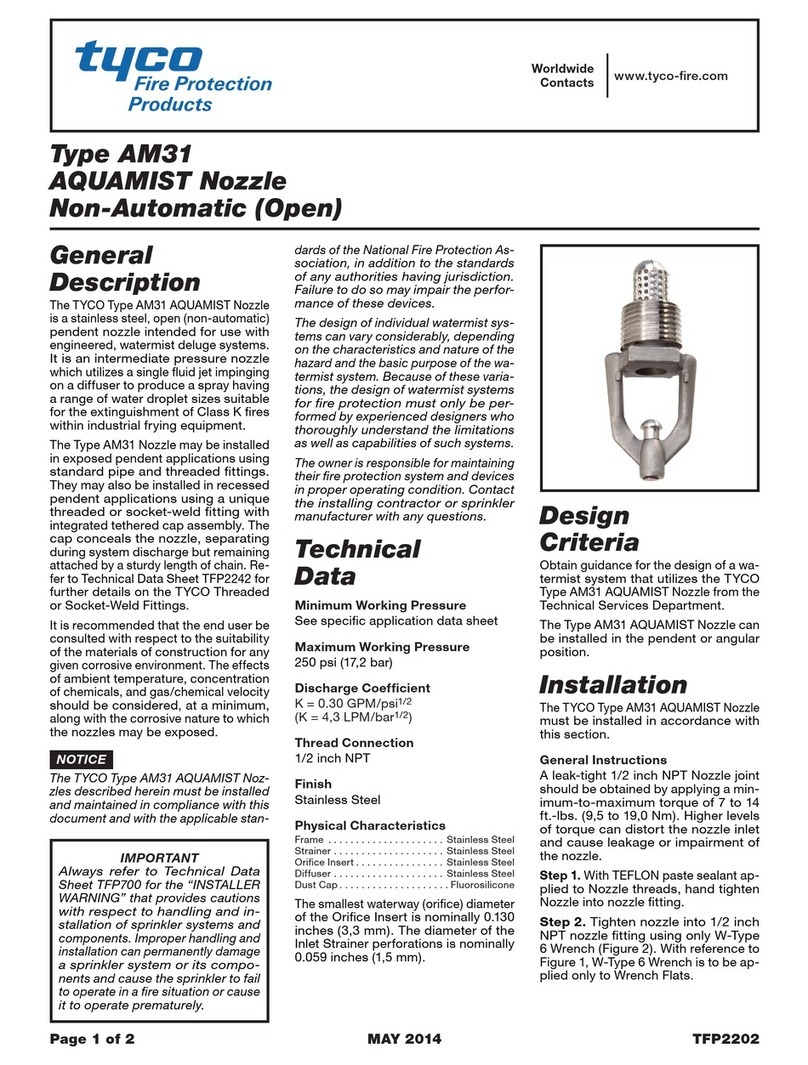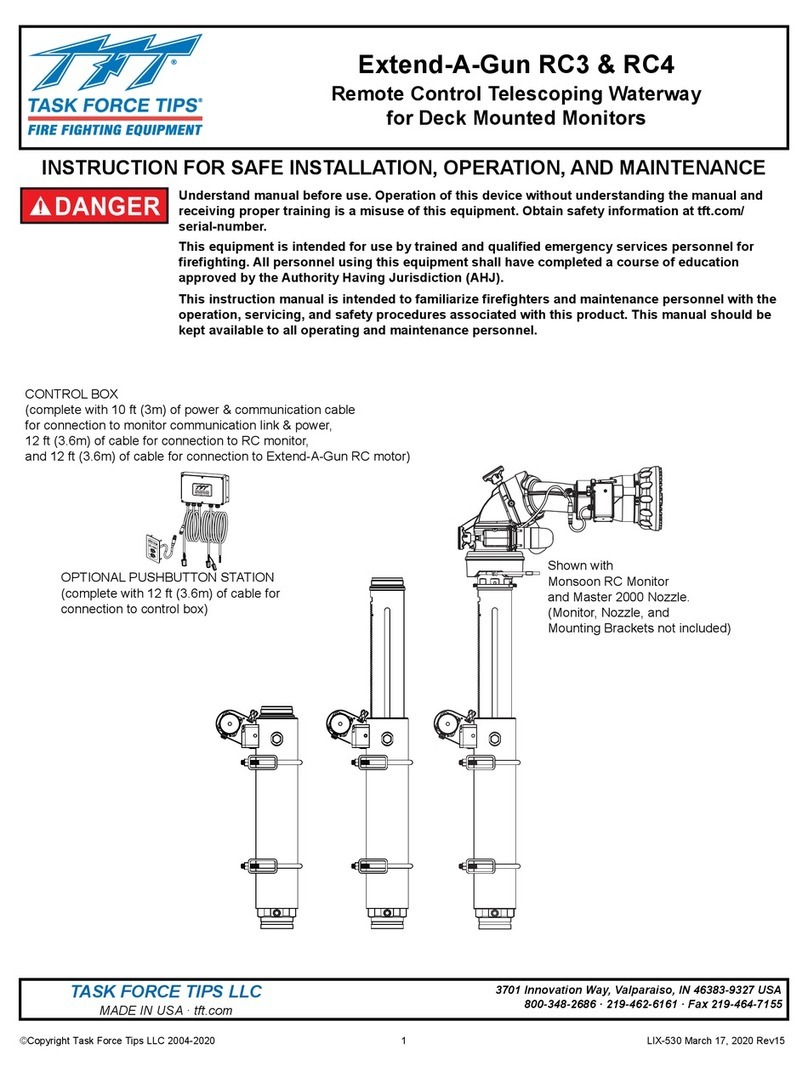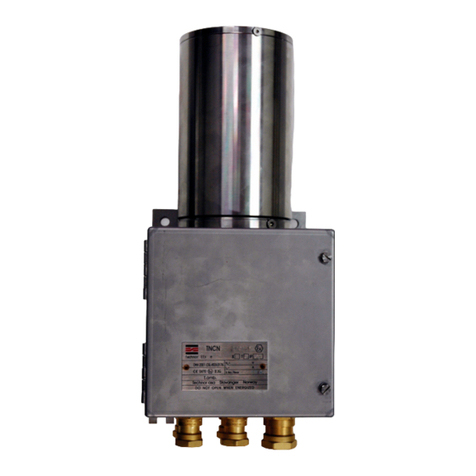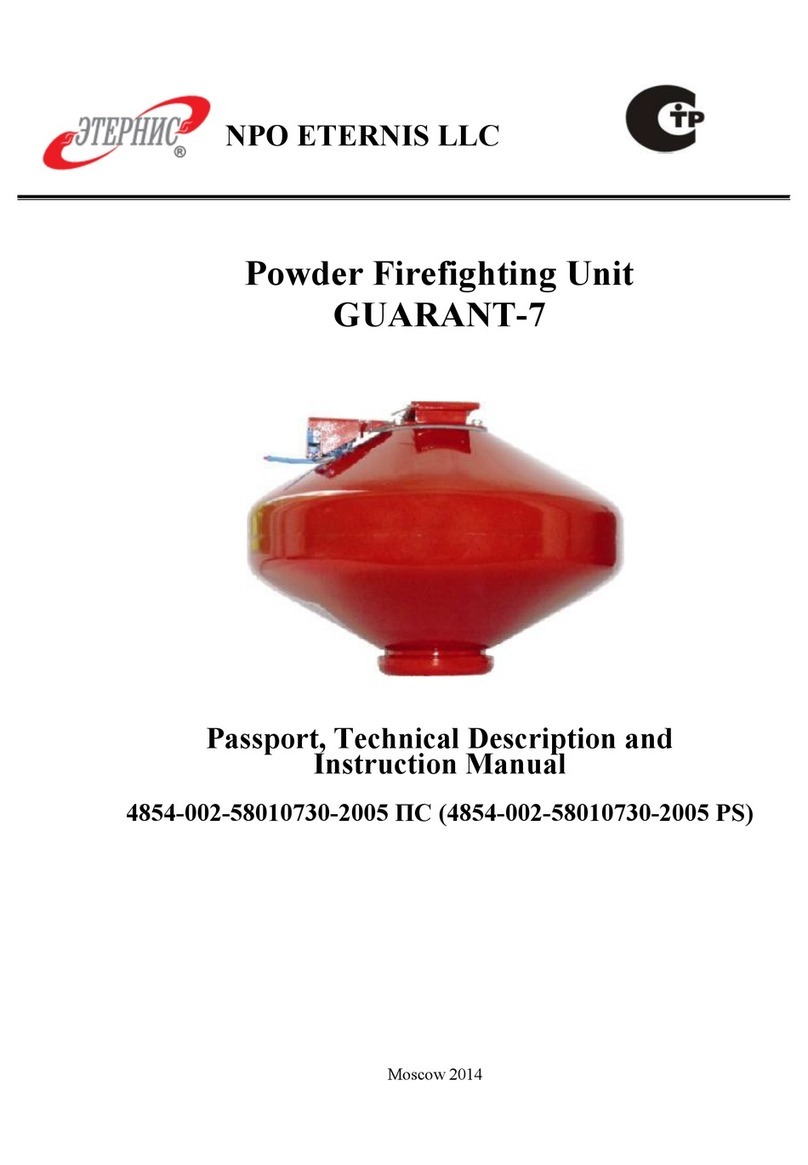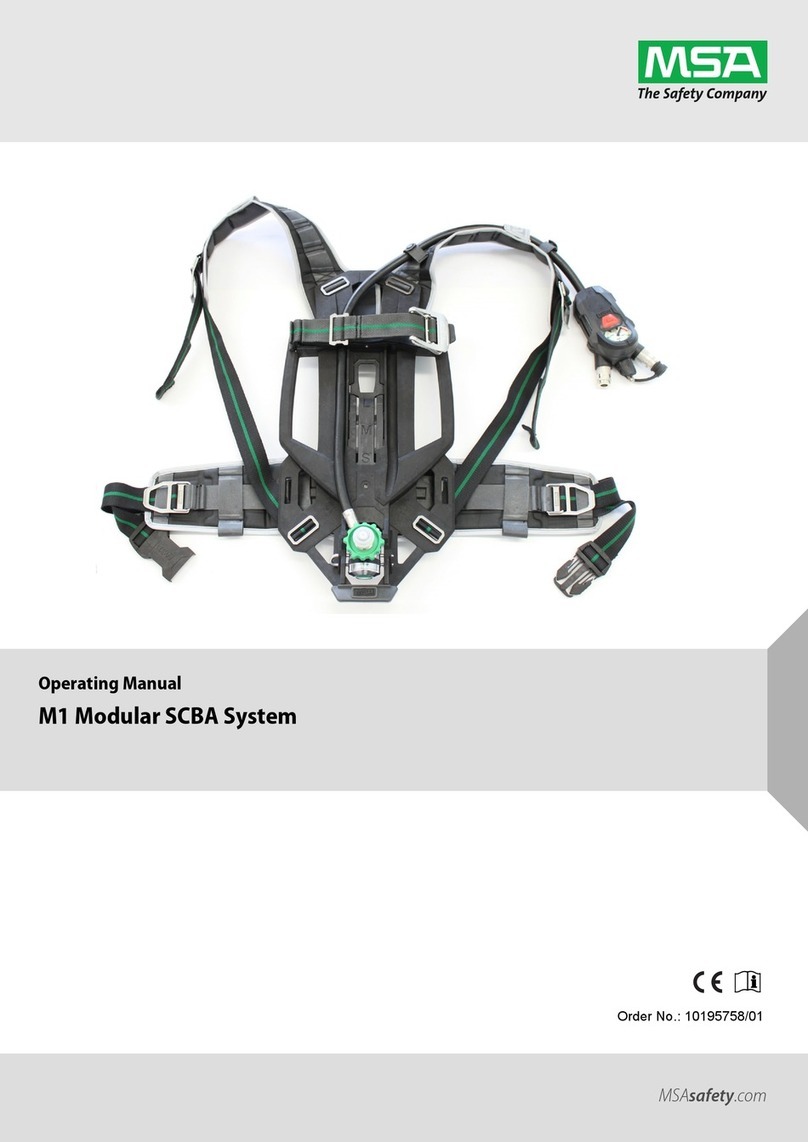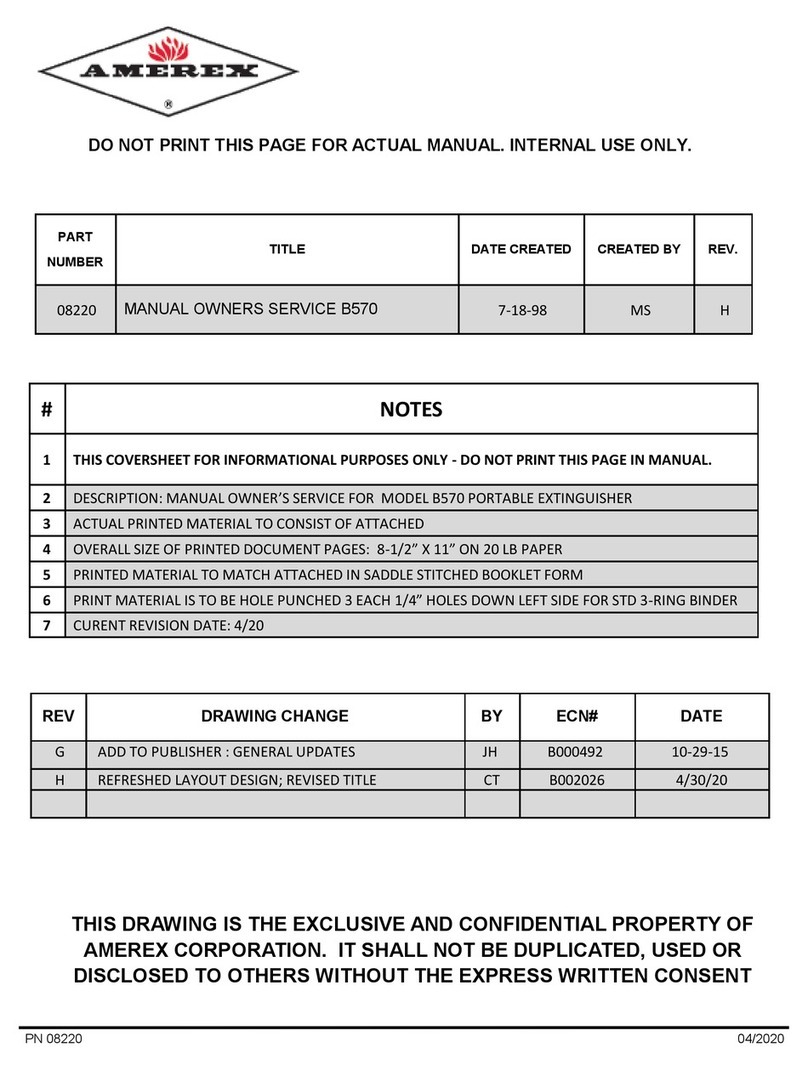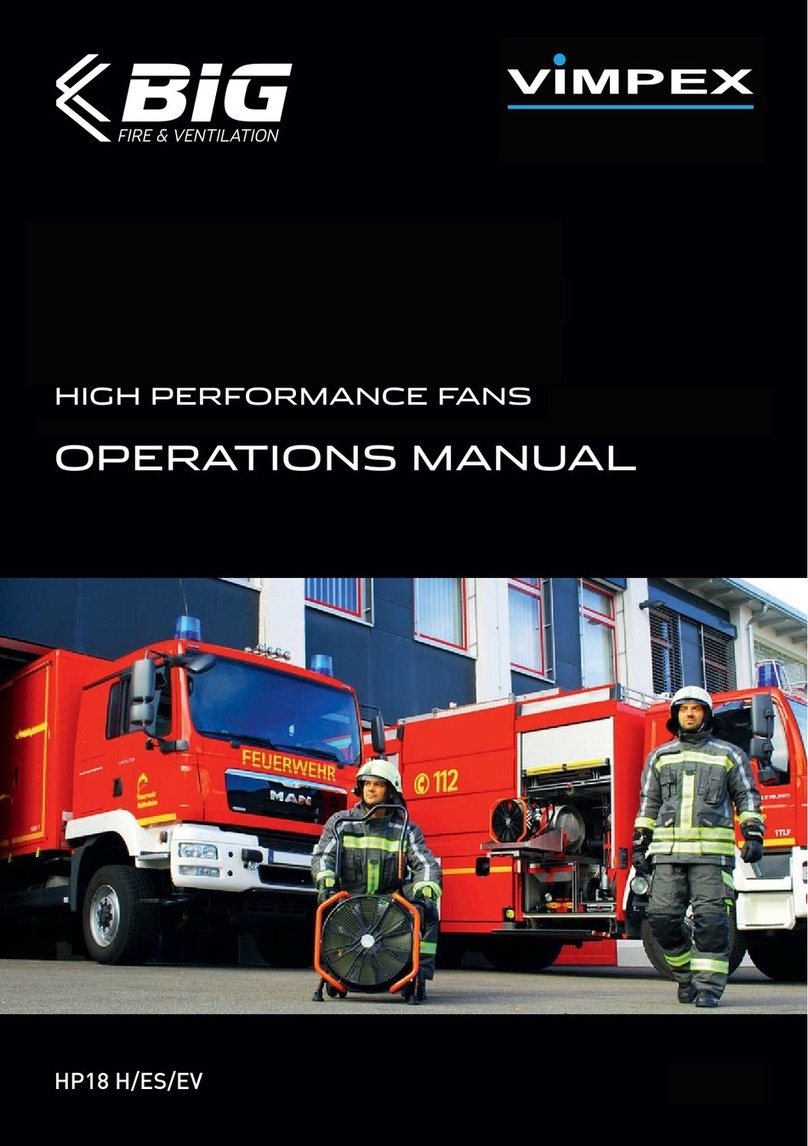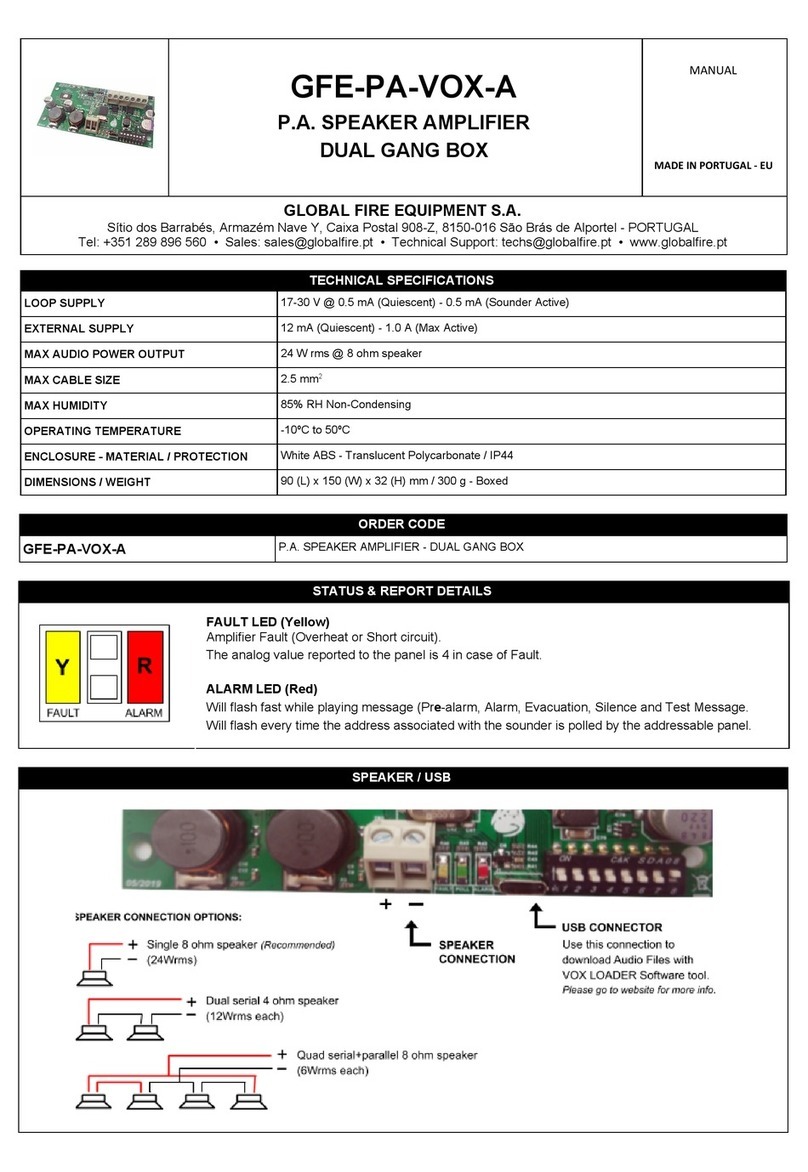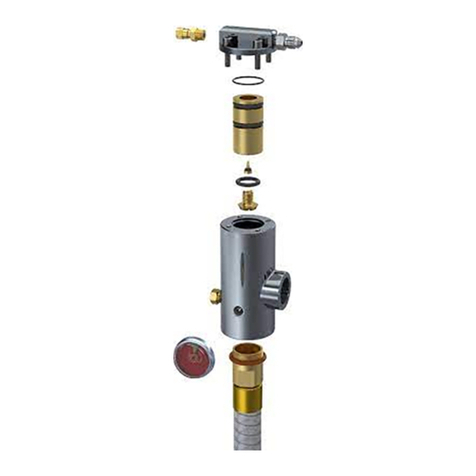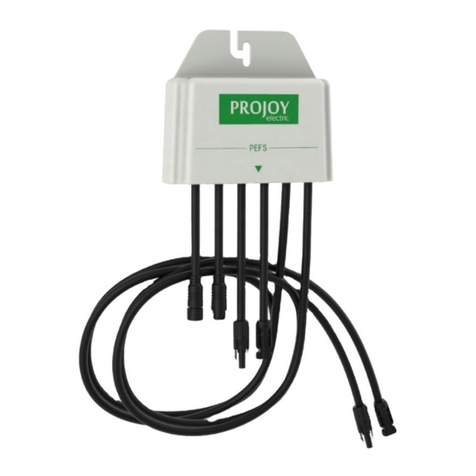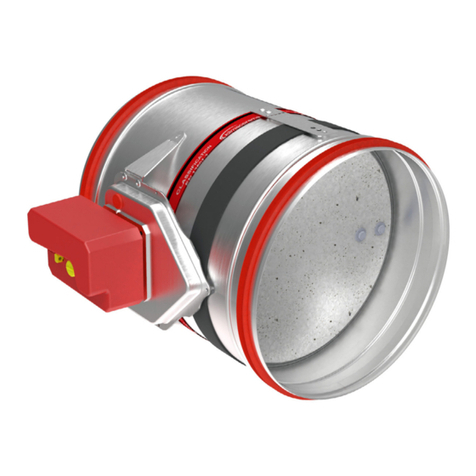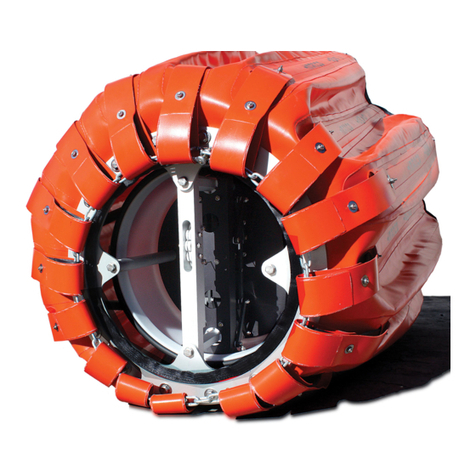
Page 2 of 10 TOTALPAC ®3
B
Integrated Fire Protection System
Mechanical Section - Dry Pipe System
FM-076A-0-57C
1.3 Dry pipe valve clapper settings
1. OPEN main drain valve (D3) to completely drain the
system piping network. If the system has operated or if
water has entered the system, open all auxiliary drains
and the system test valve. Allow enough time to
completely drain the system.
2. Verify that the dry pipe system is not pressurized.
3. Use a 15/16" wrench to loosen and remove hand-hole
cover bolts from the dry pipe valve (A1) cover. Remove
hand-hole cover.
To RELEASE a latched clapper assembly for service
1. With the hand-hole cover removed from the dry pipe
valve (A1), insert the re-setting tool through the hole in
hook assembly, across the fulcrum cast on top of
clapper arm assembly until the re-setting tool contacts
the stopper on top of clapper arm assembly (see
figure 2C).
2. Apply a downward force on the end (from outside the
valve) of the re-setting tool. Hook assembly will slide
toward the hand-hole and off clapper arm assembly.
Clapper arm assembly and clapper assembly will
forcefully open, impact against latch and latch in the
open position.
Note : Inspection and cleaning procedure step 3 below is
considered part of the annual trip test.
3. Inspect and clean the internal parts of the dry pipe
valve (A1). Give special consideration to the water
seat, air seat and clapper rubber. Wipe away all
contaminants, dirt, and mineral deposits. Do not use
solvents or abrasives. Operate all parts to test freedom
of movement. Renew or replace damaged or worn
parts as required.
WARNING NEVER apply any lubricant to seats, gaskets, or
any internal operating parts of the dry pipe valve (A1).
Petroleum based grease or oil will damage rubber
components and may prevent proper operation of the dry
pipe valve.
Note: When a valve has been removed from service and is
subject to freezing or will be out of service for an extended
period of time, all water must be removed from the priming
chamber, trim piping, water supply piping and any other
trapped areas.
To SET the dry pipe valve clapper
1. With the hand-hole cover removed from the dry pipe
valve (A1), raise the latch to release spring loaded
clapper arm assembly from the latched open position
(see figure 2A).
2. Move the clapper arm assembly down toward the
horizontal position (see figure 2B).
3. While holding spring loaded clapper arm assembly
down, insert the re-setting tool through the hole in the
hook assembly across the fulcrum cast on the top of the
clapper arm assembly, until the re-setting tool contacts
the stopper as shown in figure 2C.
4. Apply a sharp upward force at the end of the re-setting
tool. Hook will slide forward on the re-setting bar and
latch the clapper closed with a positive setting action
(see figure 2C).
5. Priming water is not required and may not be desirable
where clean, good quality fresh water is not available. If
priming water is desired, fill the dry pipe valve (A1) with
water to the bottom of the hand-hole.
6. Verify that the intermediate chamber of the dry pipe
valve (A1) is free of water. No water should flow from
the drip check valve (B7) when plunger is pushed.
7. Visually inspect hand-hole cover gasket. Verify that it is
in good condition.
8. Re-install hand-hole cover, gasket and hand-hole cover
bolts.
1.4 Placing the system in service
When the dry pipe system is ready to be placed in service,
verify that all equipment is adequately heated and
protected to prevent freezing and physical damage.
1. Verify that the main water supply valve (D1) is CLOSED.
2. OPEN the main drain valve (D3). Drain all water from the
dry pipe system. If the system has operated, or if water
has entered the system, OPEN all auxiliary drains. Allow
enough time to completely drain the system.
3. CLOSE all auxiliary drains and the priming / water level
test valve (B1) on the dry pipe valve trim. The main
drain valve (D3) should remain OPEN.
4. If the system is equipped with a Viking accelerator and
external anti-flood device (see section D AIR SUPPLY):
a) CLOSE the anti-flood isolation valve (1).
b) Observe the air pressure gauge on top of the
accelerator. The gauge must read zero before the
accelerator will automatically reset. It may be
necessary to loosen, remove, and re-install (use
appropriate wrench) the air gauge to vent trapped air
pressure from the upper chamber of the accelerator.
5. OPEN the dry pipe system air supply and establish
desired system pressure. For complete pressures
settings, see section D AIR SUPPLY).
